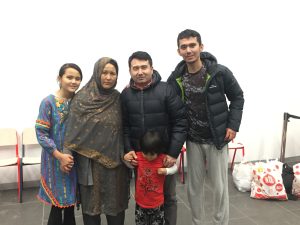Aussie cities welcoming of refugees, study finds
Australia’s major cities, including Dandenong, Casey and Hume in Victoria, are welcoming places for newly arrived refugees and offer the opportunity to find support and community while also speeding up their settlement journeys.
And most refugees are positive about where they live in Australia and value the vibrant and familiar ethnic and linguistic communities that accept them.
These are findings of a ground breaking research project analysing the refugee settlement through the lens of the Local Government Areas (LGAs) where most of the people who arrive in Australia on humanitarian visas begin their new lives in Australia.
The report, titled ‘Settlement Cities, a place-based study of Australia’s major refugee settlement destinations’, was produced by the Edmund Rice Centre in partnership with AMES Australia and other settlement agencies.
It found that while the ‘settlement city’ model was not intentionally created by policy makers, the cities share characteristics that help the settlement process.
“Australia’s settlement cities help refugees to quickly feel at home and find community in Australia. Refugees who have this community support find it helps them settle quickly and relatively easily in their new home,” the report’s authors say.
They say other LGAs which are starting to attract larger numbers of refugees could learn from the existing settlement cities analysed in the research, which include the cities of Greater Dandenong, Hume and Casey in Victoria and Fairfield and Liverpool in NSW, as well as Logan in Queensland and Salisbury in SA.
“These communities complement formal settlement services in assisting with settlement support and orientation in the early days after arrival, offer a sense of familiarity, early opportunities for belonging and inclusion, and sustain ethnic businesses that provide familiar goods and services,” the report says.
“The presence of a multitude of different ethnic communities, moreover, imbues settlement cities with a strongly multicultural character which refugees value and which helps them to not feel out of place,” it says.
However, the report finds some issues in the provision of settlement services across Australia.
“There is a great deal of expertise in Australia’s settlement cities about making both settlement specific and mainstream services accessible to refugees,” it says.
“However, such expertise is unevenly distributed, with some mainstream services providing exceptional tailored support and others remaining quite difficult for refugees to access.
“Some mainstream services are still being delivered in ways that impose physical, digital and cultural barriers to access for refugees, with the former jobactive services (recently renamed to Workforce Australia) standing out as especially problematic in these respects.
“Even when mainstream services are accessible, moreover, refugees’ lack of familiarity with them can reduce confidence to seek help and limit engagement,” the report says.
The report recommended that the federal government should maintain and expand existing humanitarian visa policies that support the creation of settlement cities and also bolster place-based settlement funding at federal but also state government level in recognition of the unique role the settlement city plays in settling refugees.
It also argued that federal and state governments should detail and help implement consistent cultural competency standards for mainstream services operating in areas with significant refugee settlement, including tracking of and accountability for outcomes.
“Mainstream services operating in settlement cities should improve their capacity to engage with refugee communities by hiring bicultural workers in client-facing roles and involving bicultural workers and community associations in program design and delivery,” the report says.
 It also recommended a rethink of the timing of settlement support, saying that it was “front-loaded” with an overwhelming amount of information provided on arrival, ” largely to meet government-mandated milestones rather than with the needs of individual families in mind”.
It also recommended a rethink of the timing of settlement support, saying that it was “front-loaded” with an overwhelming amount of information provided on arrival, ” largely to meet government-mandated milestones rather than with the needs of individual families in mind”.
On the other hand, limited support is available to help with long-term issues. This poorly matches the needs of many individuals and most communities, the report says.
It argued service providers need more flexibility to support refugees needing assistance beyond the 5-year settlement period and address information overload in the early months.
“The federal government should create flexibility for service providers around cut-offs for settlement support eligibility… (and) should review the structure of initial on-arrival support to mitigate information overload and better tailor assistance to the needs of individuals,” the report says.
CEO of refugee and migrant settlement agency AMES Australia Cath Scarth said the report showed the importance of harnessing communities in supporting newcomers to Australia to settle.
“Securing employment and housing, like any other Australians, are priorities for newly arrived refugees. And we can see from the research that having welcoming cities and communities can help deliver these aspirations,” Ms Scarth said.
“The vibrant multicultural communities that welcome refugees provide a familiarity and sense of belonging that help refugees develop a stake in the communities where they live,” Ms Scarth said.
Dandenong resident and Afghan refugee Hamid Arfany says he feels welcome and supported in is new community.
“We have everything we need in Dandenong. There are other members of our community living nearby, we can buy the food and other things we are familiar with – and the local council has programs that support us,” Hamid said.
“We feel comfortable because there are many people from many places across the world. We are not different, in Dandenong being form somewhere else in normal,” he said.












